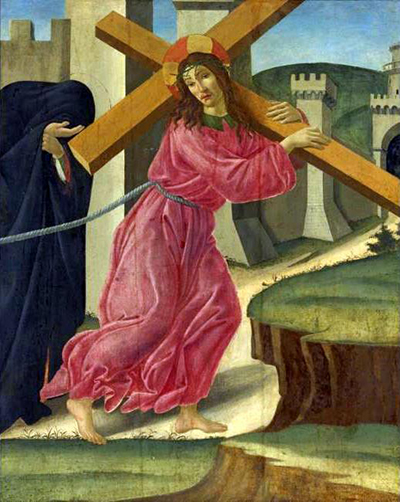Christ Carrying the Cross from 1490 is one of Sandro Botticelli's finest religious-based frescos and can now be viewed at the Beaverbrook Art Gallery in Fredericton, Canada
This painting was purchased by Max Aitken, the 1st Lord of Beaverbrook in 1963 and was loaned out to the Beaverbrook Art Gallery in order that it could be appreciated by the wider community. It had previously been purchased just a few years earlier by a London buyer from its previous ownership in Florence, Italy.
This particular artwork is believed to have been one of a series of four, together representing the Passion of Christ. Resurrection, Flagellation and Figures on the Road to Calvary were the other three in the series. It is believed that Christ Carrying the Cross may actually have been taken from other larger canvases, as if like a cropped element of a photograph.
The composition of this painting, with elements in the background rather abruptly cut off does back up the theory that it was removed from another artwork. In fact the rope tied around Christ continues into another artwork, which can surely not be pure coincidence.
Infra-red examinations were carried out on this fresco in order to ensure, beyond any reasonable doubt, that this was the original artwork being placed for auction. These studies confirmed this but also, more significantly, taught us about the amendments made by Botticelli as he put this painting together. There are countless underpainting lines that indicate how he altered the pose and position of Christ as well as the Cross that he grasped.
In art it can sometimes take the interest of a prestigious auctioner, such as Sothebys, to invest the time necessary in order to truly confirm the authenticity of an artwork, particularly for those from the Early Renaissance where very little documentation typically exists.
The Renaissance was dominated by Christian themes and with that, naturally, Christ would appear frequently in all manner of scenes and guises. The most famous names to have covered this theme include Hieronymus Bosch, Peter Paul Rubens, Michelangelo, Titian, Pieter Bruegel and El Greco.




